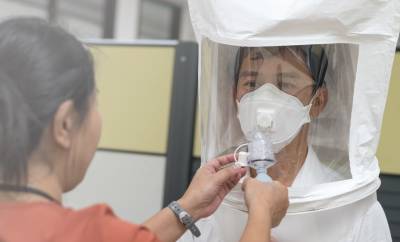
What is face fit testing?
Face Fit Testing is a method of demonstrating that the RPE provided to the wearer has an adequate seal to each individual. If the RPE doesn’t create an adequate seal to the face it can potentially result in harmful substances being inhaled into the lungs.
Why is face fit testing important?
The facts don’t lie, correctly fitting RPE has never been more important, it is estimated around 12,000 people die every year from lung-disease that is linked to past exposures at work. The HSE also states that each year 18,000 new lung-related cases are reported. RPE is manufactured to meet the requirements of the standard and every wearer has different features, so there is no mask on the market that will fit everyone.
It’s a Legal Requirement
If you work under the COSHH Regulations or any other equivalent requirement and you wear a tight-fitting mask as PPE, it is a legal requirement to carry out face fit testing. The face fit test should also include training in the donning & doffing and maintenance of the RPE.
Face Fit Testing isn’t Just For New Masks
Face fit testing should be carried out on all tight fitting RPE on a regularly basis. A repeat fit test should be carried out if you change the RPE to a different model, if the wearer has sufficient weight gain or loss, facial changes, for example a broken nose or major dental work. If you are using a contractor to carry out the fit testing, it is always recommended that that the fit tester is Fit2Fit Accredited.
In summary, face fit testing is highly important for your safety. Carrying out regular testing does not only give you piece of mind, but it’s a legal requirement, so don’t let this test slip through the net.
Any questions? Contact us!
